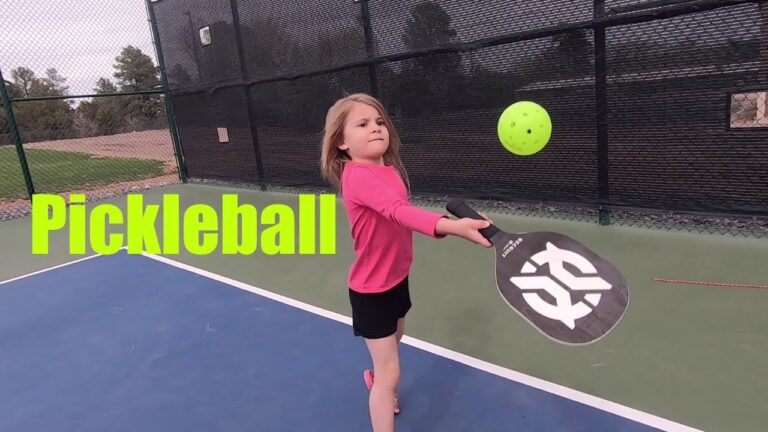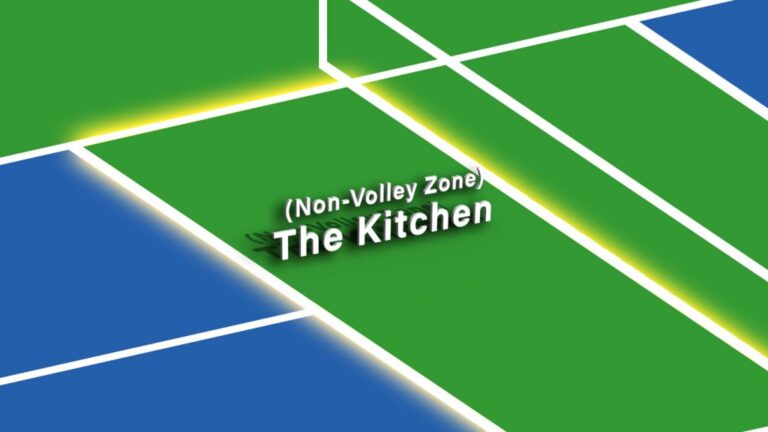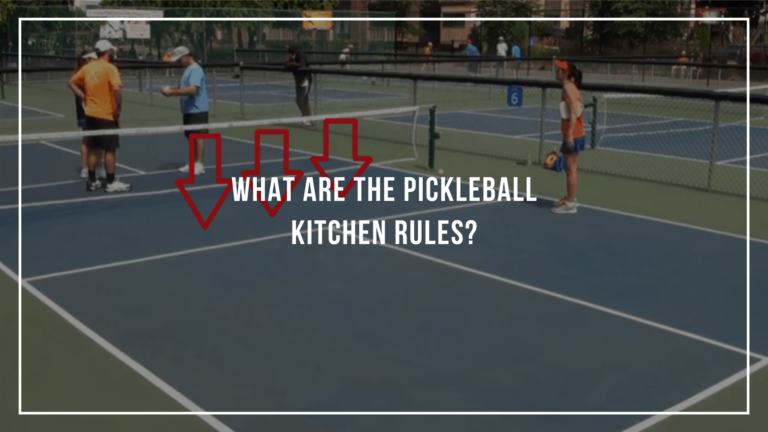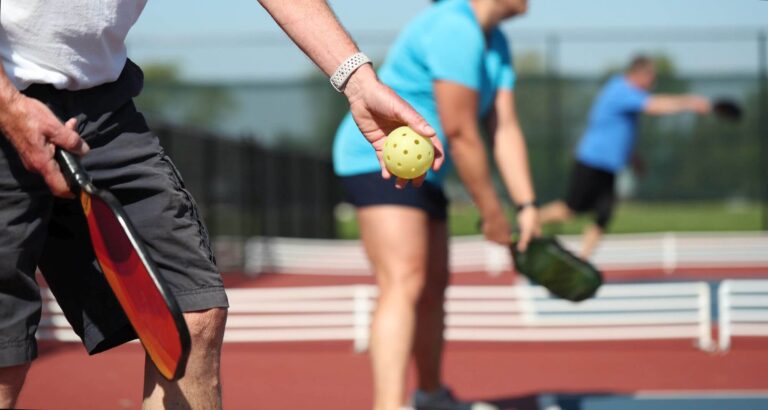So What is a Pickleball Court? (Your Ultimate Guide)
If you’re new to the world of pickleball, you may be wondering what exactly a pickleball court entails.
We will explore the dimensions of a pickleball court, the materials used to build one, and the different types of courts available.
We’ll also delve into the rules of playing on a pickleball court, the equipment needed, and how to set one up.
Learn about the health benefits of playing pickleball and why it’s becoming a popular sport for people of all ages.
Key Takeaways:
- A pickleball court is a playing surface specifically designed for the sport of pickleball, with specific dimensions and materials used.
- There are three main types of pickleball courts: indoor, outdoor, and portable, each with their own unique features and advantages.
- Playing on a pickleball court requires knowledge of the rules, including serving and scoring rules, as well as consequences for faults and penalties.
What is a Pickleball Court?
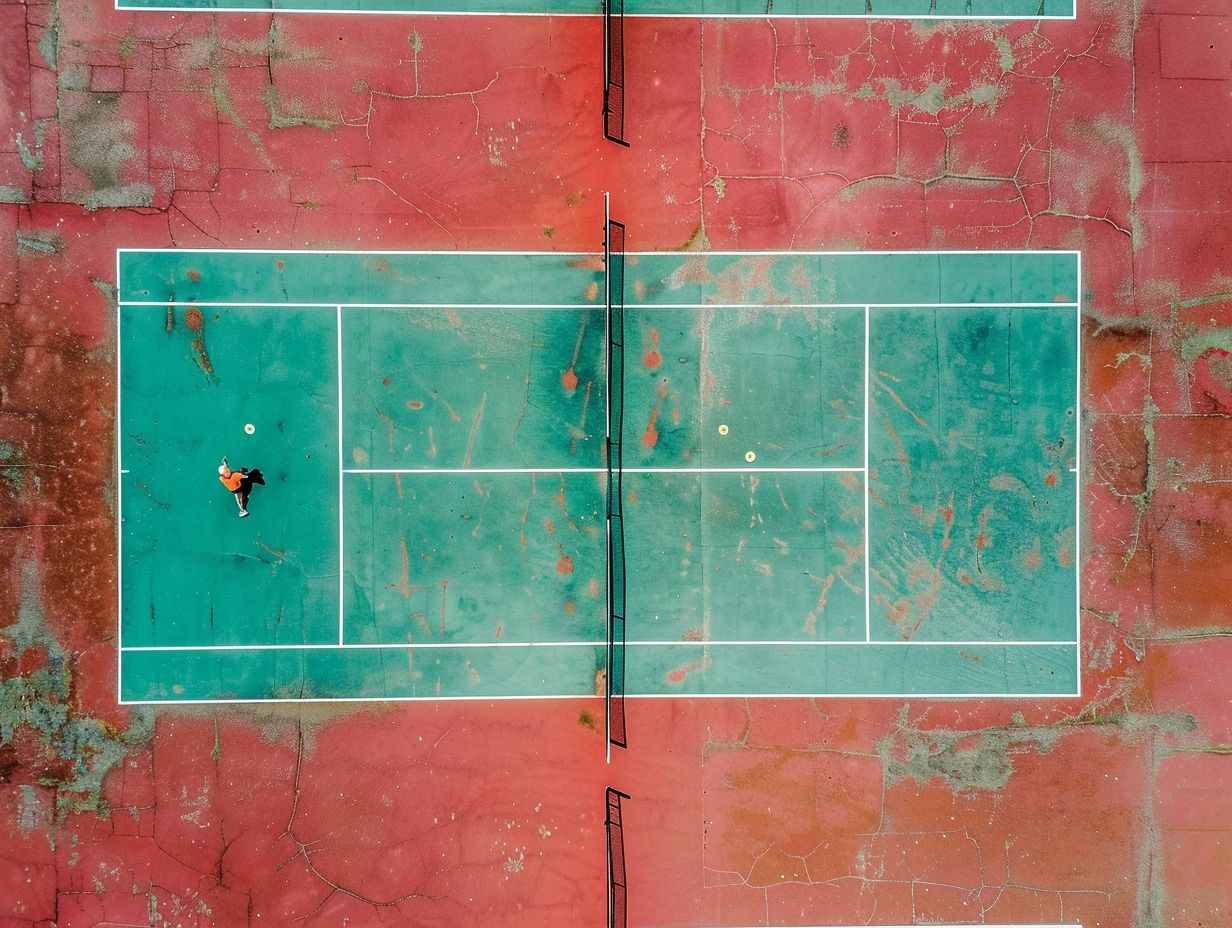
A Pickleball Court is a specialized playing surface that follows specific dimensions, often resembling a badminton court but with unique measurements according to USA Pickleball regulations.
Pickleball courts are typically 44 feet long and divided by a net, which stands at a height of 34 inches at the center. Inside the court, there are specific zones for serving and player positioning. Players use paddles to hit a perforated plastic ball over the net, engaging in fast-paced and strategy-focused gameplay.
The layout of a Pickleball Court includes boundaries for singles and doubles play, each requiring precise shots and quick footwork. These courts are tailored to accommodate the sport’s unique dynamics, allowing players to enjoy the game’s mix of finesse and power.
Dimensions of a Pickleball Court
The standard dimensions of a Pickleball Court for outdoor play adhere to specific measurements to ensure a fair and regulated playing environment, with guidelines set by organizations like USA Pickleball.
To meet these standards, a typical outdoor Pickleball Court measures 44 feet in length and 20 feet in width, with a total playing area of 20 x 44 feet. The net is positioned at the center of the court, dividing it into equal halves. On each side of the net, there are specific non-volley zones, commonly known as the ‘kitchen,’ that extend 7 feet from the net. These zones play a crucial role in the game, limiting certain shots near the net to ensure fair play and strategy.
Materials Used for a Pickleball Court
Pickleball courts are typically constructed with durable materials that provide a hard surface suitable for competitive play, along with features like portable nets to facilitate easy setup and dismantling.
Common materials used in building pickleball courts include asphalt, concrete, or acrylic surfaces to ensure durability and the ideal playing conditions. These materials are chosen for their ability to withstand heavy foot traffic and provide consistent bounce for an enjoyable game experience.
The portability of nets is crucial for setting up temporary courts in various locations, making the sport accessible to more players.
When considering court sizes, it’s important to remember that official pickleball courts are 44 feet by 20 feet for doubles matches, but smaller spaces can be adapted for casual play as well.
What are the Different Types of Pickleball Courts?
Pickleball courts come in various types to accommodate different settings, including indoor courts commonly found in recreation centers, outdoor courts situated in local parks, and temporary lines that can be added to existing surfaces like basketball courts.
Indoor pickleball courts are often favored for their controlled environment, where players can enjoy a game regardless of weather conditions. These courts boast smooth surfaces and proper lighting, making them ideal for competitive play.
On the other hand, outdoor pickleball courts offer a more natural setting, allowing players to bask in the sunshine and enjoy fresh air during their matches. Many outdoor courts are public facilities that encourage community engagement and social interaction. Temporary setups provide flexible options for venues that may host various sports, easily transforming into pickleball courts with the addition of temporary lines.
Indoor Pickleball Court
Indoor Pickleball Courts offer a dedicated space for players to enjoy the game regardless of weather conditions, with some facilities having permanent setups like those provided by Sport Court Northern California.
This type of indoor setup not only allows players to participate in the sport year-round but also provides a consistent and reliable playing surface, enhancing the overall experience. Partnering with reputable organizations such as Sport Court Northern California ensures top-quality materials and expert installation, guaranteeing a long-lasting and durable court that stands the test of time.
Permanent indoor courts offer a convenient and accessible venue for players to practice regularly and improve their skills, leading to a more engaging and fulfilling pickleball experience for enthusiasts of all levels.
Outdoor Pickleball Court
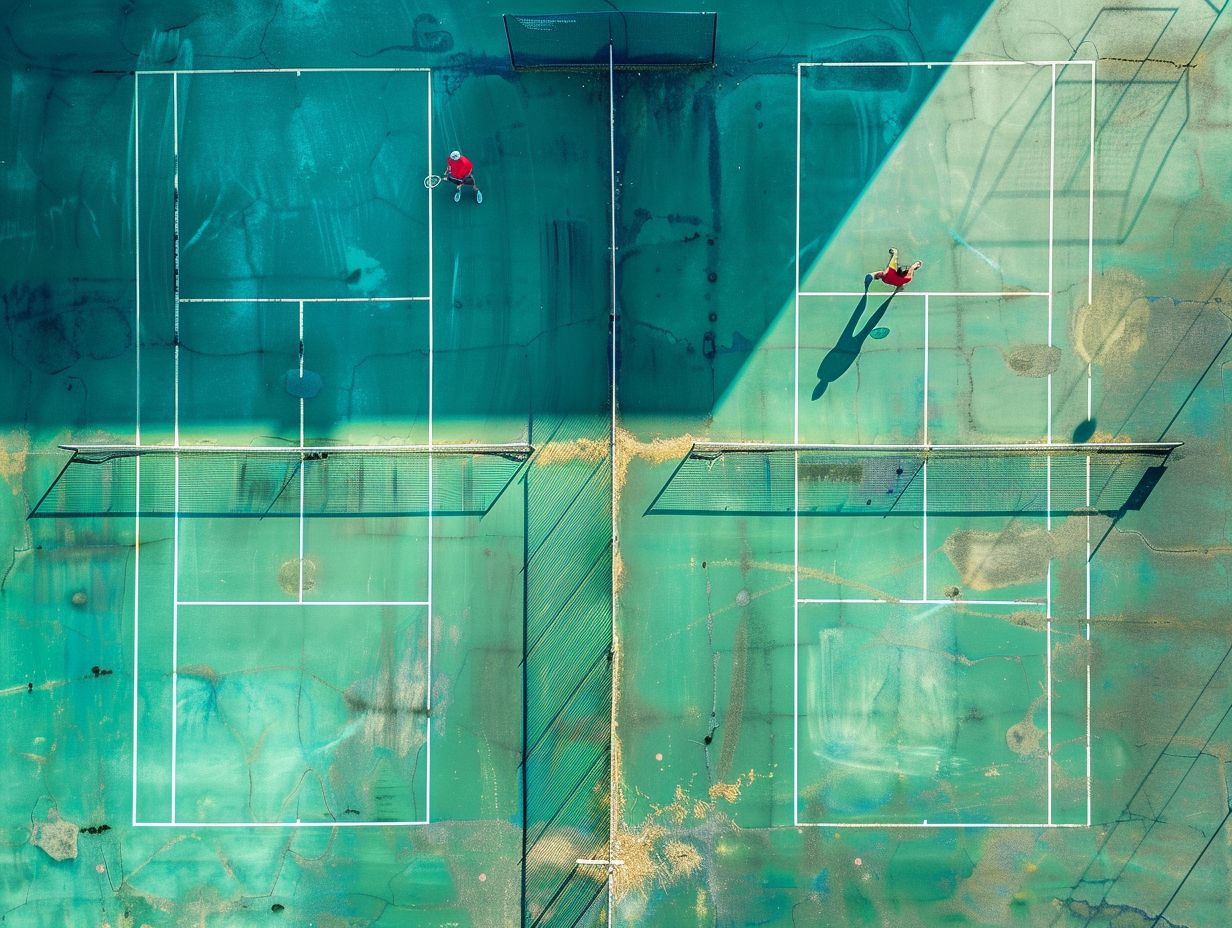
Outdoor Pickleball Courts are commonly found in public spaces like parks and recreation areas, often repurposing existing surfaces such as basketball courts and adapting them for pickleball play, utilizing specific equipment like wiffle balls.
Accessibility is a key aspect of outdoor pickleball courts, allowing people of varying ages and skill levels to enjoy the game. These public areas provide a welcoming environment for new players to learn and practice.
The adaptations from other court types, such as basketball courts, involve resizing and marking out distinct pickleball boundaries, ensuring a smooth transition between sports.
The game typically involves the use of wiffle balls, which are lightweight and perforated, making them suitable for pickleball’s pace and play style.
Portable Pickleball Court
Portable Pickleball Courts offer flexibility for players by providing portable nets that can be easily set up in various locations, allowing for dynamic player movement and the utilization of available extra space.
These courts are designed to cater to the needs of players who are looking for convenience and adaptability. The portability of the nets enables players to transform different spaces into pickleball courts effortlessly, making it perfect for both indoor and outdoor settings.
The impact of this flexibility extends to the movement dynamics of players during the game, promoting agile and strategic play. The versatility of portable pickleball courts allows for adjusting the court size based on the available space or accommodating larger events. The ease of setup and disassembly contributes to the overall convenience and accessibility for players of all skill levels.
What are the Rules of Playing Pickleball?
Playing pickleball involves adherence to specific rules governing service areas, boundary lines, and court dimensions to ensure fair and regulated gameplay according to regulation size standards.
One essential aspect of playing pickleball is understanding the designated service areas. These areas are marked on the court and dictate where the serving player must stand during the serve.
Players must pay close attention to the boundary lines, which define the playable area of the court. Any ball landing outside these lines is considered out of bounds.
It is crucial to closely follow the regulation size guidelines for pickleball courts to maintain fairness and consistency in gameplay. This includes the dimensions of the court, net height, and other specifications that ensure a level playing field for all participants.
Serving Rules
Serving rules in pickleball dictate requirements such as hitting the ball below the waist, ensuring the serve clears the net at a specified height, and observing regulations set by organizations like the United States Pickleball.
When serving in pickleball, players must position themselves behind the baseline and hit the ball diagonally into the opposite service court. It is crucial to avoid stepping over the baseline until after making contact with the ball. Players must be mindful of the net heights, which are typically 34 inches at the center and 36 inches at the sidelines. These net height regulations ensure fair play and maintain consistency across matches.
Scoring Rules
Scoring rules in pickleball involve the rotation of service courts, keeping track of points earned on different sides of the court, and implementing strategies that players find effective for a competitive advantage, making understanding these rules a good idea for all players.
Regarding service courts, players must be mindful of the specific placement requirements to avoid any penalties. Tactics vary when playing on the different sides of the court, with players adjusting their positioning and shot selection accordingly. Strategic thinking not only involves planning shots but also anticipating the opponent’s moves and adapting gameplay to outmaneuver them.
Faults and Penalties
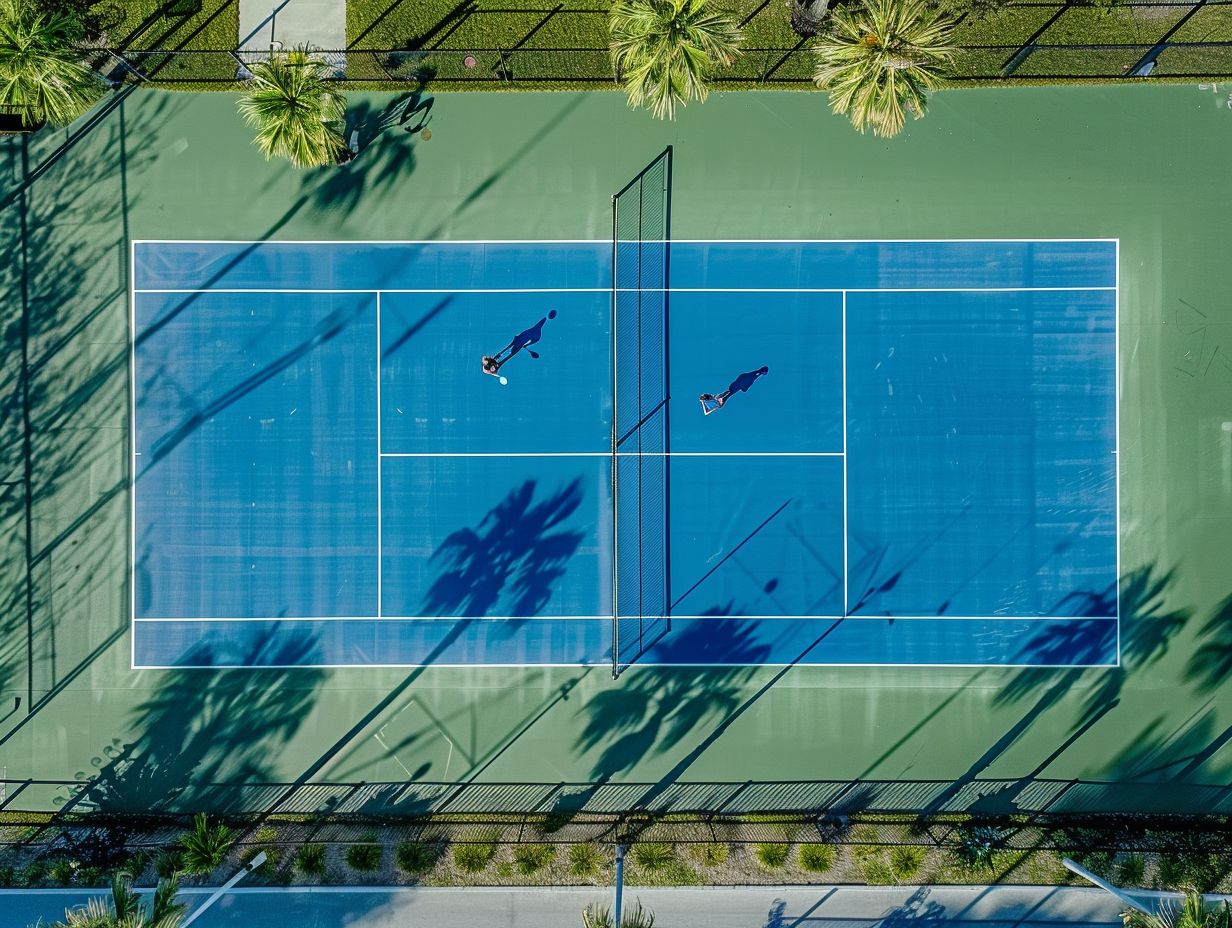
Faults and penalties in pickleball are incurred for violations such as hitting the ball out-of-bounds, interacting with the pickleball court surface improperly, or failing to observe the length of the court during play, leading to penalties or loss of points.
Out-of-bounds play is a common mistake that can cost players dearly during a pickleball match. When the ball lands outside the designated court boundaries, whether on the sidelines or baseline, it results in a fault, handing the opponent a point. Improper interaction with the court surface, like stepping on the kitchen line during a volley, can also lead to penalties. Adherence to the court length regulations, ensuring that serves are made from the correct position, is crucial to avoid unnecessary faults and maintain fair play.
What Equipment is Needed to Play Pickleball?
Playing pickleball requires specific equipment such as paddle sport gear, pickleball nets, and elements borrowed from tennis to engage in the sport effectively and enjoy a fulfilling game experience.
One of the key items needed for pickleball is the paddle, which is a specialized racket used to hit the ball. These paddles are similar to table tennis paddles but with a different design.
Setting up a proper pickleball net is crucial to define the court boundaries and ensure fair play. To top it off, incorporating certain tennis-related elements like the serve and scoring system can add an exciting twist to the game.
Pickleball Paddle
The Pickleball Paddle, a key piece of equipment, must adhere to regulation size standards outlined in the USA Pickleball Rulebook, featuring a flat surface ideal for striking the ball accurately and with control.
According to the USA Pickleball Rulebook, a pickleball paddle should not exceed 17 inches in length, 7 inches in width, and 0.5 inches in thickness. These specifications ensure fair play and consistency across matches. A critical aspect of pickleball paddle design is the presence of a flat striking surface, which allows players to generate precise shots and strategic placement. Players looking to improve their game often prioritize finding a paddle that offers both power and finesse, characteristics that can be enhanced by a high-quality, regulation-compliant pickleball paddle.
Pickleball Balls
Pickleball Balls used in the sport are designed for specific gameplay, similar in size to tennis balls but with variations, requiring accurate measurements and consideration for ball interaction on different sides of the net during play.
When comparing pickleball balls to tennis balls, one significant difference is the number of holes present on the surface. While pickleball balls have more holes, around 40, tennis balls typically have just one. This distinctive feature impacts the aerodynamics and bounce of the balls during gameplay.
Measuring the diameter of a pickleball requires precision, usually done with a measuring tape, as even slight differences in size can affect the game. Understanding how the ball moves across the net, including its speed and bounce, is crucial for players to strategize effectively.
Pickleball Net
The Pickleball Net is a crucial component of the court setup, featuring a specific system that ensures proper placement and tension, with considerations for width alignment and the availability of portable alternatives for convenient use.
One of the key characteristics of the pickleball net is its regulation height, which is crucial for fair gameplay and maintaining standards across different courts. The net is designed to divide the court into two equal halves, facilitating competitive and enjoyable matches.
Efficiently aligning the net with the court’s width is essential to ensure accuracy and consistency during gameplay, preventing any disputes over boundaries. Portable pickleball nets offer flexibility, allowing players to set up courts in various locations, whether indoor or outdoor, and adapt to different playing environments.
How to Set Up a Pickleball Court?
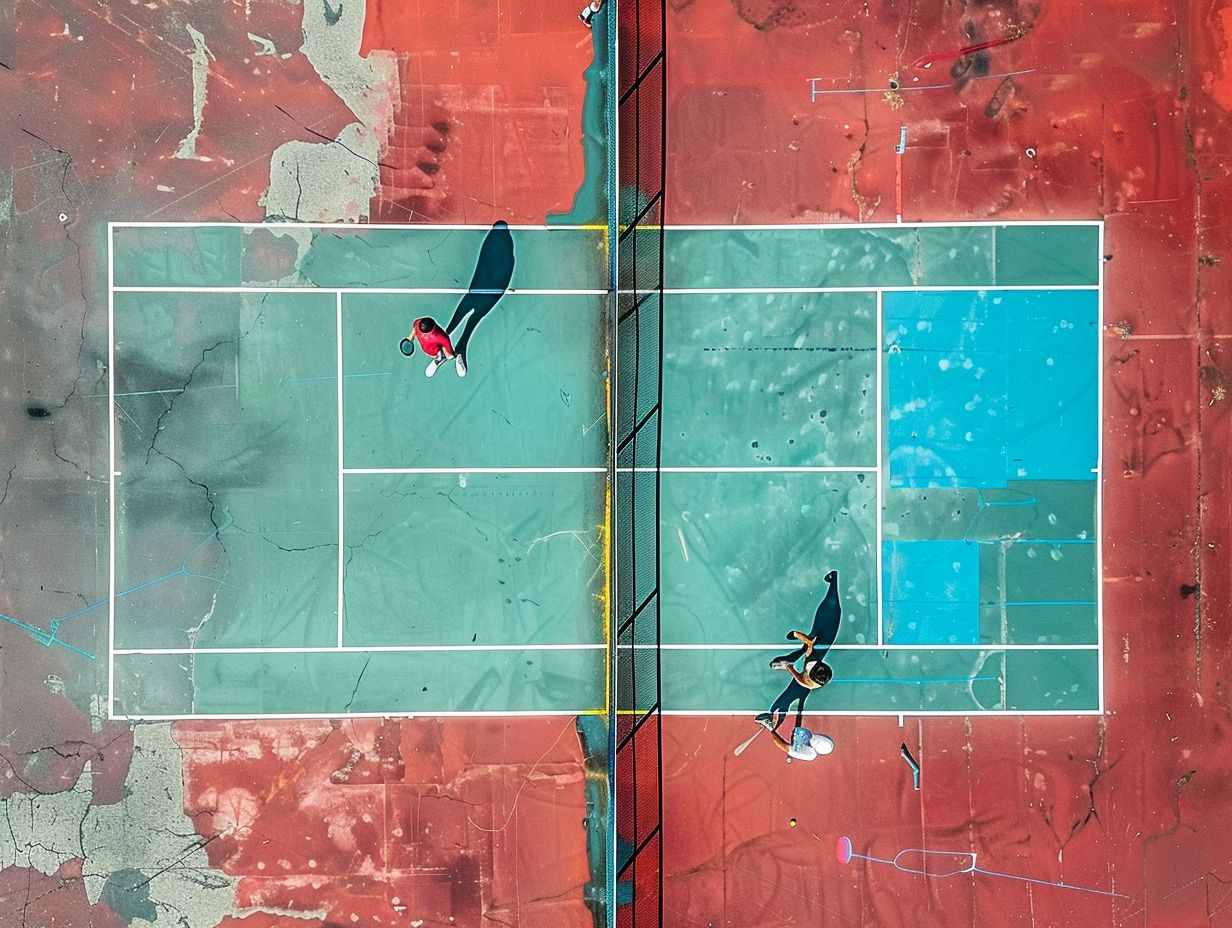
Setting up a Pickleball Court involves various steps, from creating new courts with official specifications to adapting existing spaces for makeshift play, highlighting the importance of adherence to standards recognized by organizations like USA Pickleball.
When establishing a new court, the first step is to designate an area that meets the dimensions required for a standard court, which is 20 feet wide and 44 feet long for doubles play. Next, marking the boundaries with appropriate paint or tape is essential for clear visibility during games. Utilizing materials such as portable nets and line markers can facilitate the process of converting any flat surface into a playable court.
Recent developments in the world of pickleball include partnerships and agreements with USA Pickleball to promote the sport and establish official guidelines for court construction, aiming to enhance the overall playing experience for enthusiasts worldwide.
What are the Health Benefits of Playing Pickleball?
Playing Pickleball offers an array of health benefits, including engaging in a cardiovascular workout, enjoying low-impact exercise suitable for various ages, and utilizing facilities like those found in popular locations such as Memorial Park.
Cardiovascular benefits are key when playing pickleball, as the fast-paced nature of the game gets the heart pumping and improves overall stamina. The low-impact nature of pickleball makes it gentle on joints, making it an accessible sport for all ages. Locations like Memorial Park provide top-notch facilities, adding to the overall experience and attracting a diverse group of players looking to enjoy these health benefits while having fun and socializing.
Cardiovascular Workout
Engaging in pickleball provides a cardiovascular workout through dynamic movements, powerful serves, and strategic placements across the court’s length, offering benefits for individuals of various skill levels, including high school players.
Constant movement in pickleball helps improve endurance and stamina, making it an excellent form of exercise for high school athletes. Players need to cover the court’s length swiftly, requiring quick reflexes and agility. The serve technique in pickleball involves a mix of power and precision, requiring players to generate force from their core and lower body. This dynamic play style engages multiple muscle groups, enhancing cardiovascular health and overall fitness.
Improved Balance and Coordination
Participating in pickleball enhances balance and coordination skills, requiring players to navigate between different court sides, make precise shots, and enjoy specialized facilities like those established on Bainbridge Island for dedicated play.
Pickleball players experience significant improvements in their overall physical coordination and agility. Its layout and strategic zones, challenge participants to swiftly move and adjust their position according to the game’s pace, honing their balance in the process. The net traversal during rallies demands precise footwork and hand-eye coordination, contributing to enhanced motor skills and reflexes. Specialized court setups, such as those found on Bainbridge Island with optimal lighting and surface materials, elevate the playing experience, further refining players’ coordination and focus.
Low Impact Exercise
Engaging in pickleball offers low-impact exercise benefits due to the sport’s characteristics, adherence to specific dimensions for varied play styles, and the availability of facilities recommended by organizations like the American Sports Builders Association in local parks.
Pickleball courts are designed with dimensions that cater to players of all skill levels, promoting inclusivity and fun.
- These dimensions enhance gameplay and serve as a foundation for a safe and enjoyable sporting experience.
- Local parks often feature well-maintained pickleball facilities, encouraging community engagement and bringing people together through recreational activities.
- Established facilities endorsed by organizations like the American Sports Builders Association ensure that players can access high-quality courts that meet industry standards.
To Sum it All Up…
Pickleball stands out as one of the fastest-growing sports, offering a unique blend of strategic gameplay, portable net setups for convenience, and elements borrowed from tennis that contribute to its widespread appeal and growth in popularity.
Pickleball’s rise in popularity can be attributed to its inclusive nature, welcoming players of all ages and skill levels to enjoy the game. The portable nets used in pickleball make it easy to set up matches in various locations, from community centers to backyards, increasing accessibility and enticing more people to try the sport. Incorporating tennis elements such as scoring systems and court dimensions provides a familiar touch for those transitioning from tennis to pickleball.
Frequently Asked Questions
What is a Pickleball Court?
A pickleball court is a playing surface specifically designed for pickleball.
What are the dimensions of a Pickleball Court?
A pickleball court is similar in size to a badminton court, measuring 20 feet wide and 44 feet long.
What is a Pickleball Court surface made of?
A pickleball court’s surface is typically made of either concrete, asphalt, or a synthetic material such as rubber or polypropylene tiles.
Do pickleball courts have specific line markings?
Yes, pickleball courts have specific line markings that designate the boundaries of the court and the areas for serving and receiving.
How many pickleball courts can fit on a standard tennis court?
A standard tennis court can fit four pickleball courts, typically divided by a center net.
Can pickleball courts be used for other sports?
Yes, pickleball courts can also be used for other sports such as basketball, volleyball, and even tennis with some modifications to the net and court dimensions.

